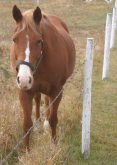Dehorning calves is an essential management practice on many livestock farms.
But researchers at the University of California, Davis, are now studying six offspring of a dairy bull that had been gene-edited to prevent it from growing horns.
While dehorning is common, designed to protect other cattle and human handlers from injuries, this scientific approach is being hailed as a more welfare-friendly alternative.
Scientists at the university report that none of the bull’s offspring developed horns, as expected, and blood work and physical exams of the calves found they were all healthy.
Read Also

Beef check-off collection system aligns across the country
A single and aligned check-off collection system based on where producers live makes the system equal said Chad Ross, Saskatchewan Cattle Association chair.
Researchers also sequenced the genomes of the calves and their parents and analyzed these genomic sequences, looking for unexpected changes.
All data from the two-year study was shared with the U.S. Food and Drug Administration and analysis by those scientists revealed a fragment of bacterial DNA, used to deliver the hornless trait to the bull, had integrated alongside one of the two hornless genetic variants, or alleles, that were generated by genome editing in the bull.
“Our study found that two calves inherited the naturally occurring hornless allele and four calves additionally inherited a fragment of bacterial DNA, known as a plasmid,” said Alison Van Eenennaam of UC Davis’s department of animal science.
Plasmid integration can be addressed by screening and selection — in this case, selecting the two offspring of the genome-edited hornless bull that inherited only the naturally occurring allele.
“This type of screening is routinely done in plant breeding where genome editing frequently involves a step that includes a plasmid integration,” Van Eenennaam added.
She said the plasmid does not harm the animals, but the integration technically made the genome-edited bull a genetically modified organism because it contained foreign DNA from another species, in this case a bacterial plasmid.
“We’ve demonstrated that healthy hornless calves with only the intended edit can be produced, and we provided data to help inform the process for evaluating genome-edited animals,” she said.
“Our data indicates the need to screen for plasmid integration when they’re used in the editing process.”
These gene-edited hornless cattle are distinct from polled cattle, which are breeds or strains that are naturally without horns, brought about through selective breeding.

















